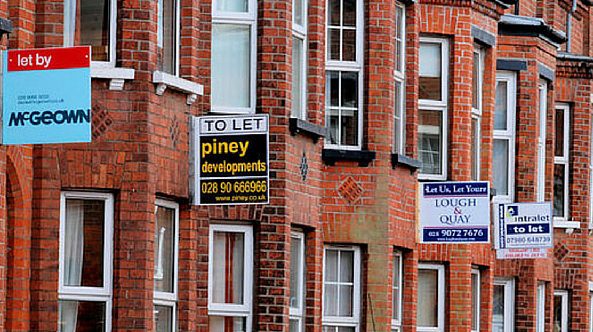The buy-to-let mortgage space is thriving thanks to greater choice and lower mortgage rates, opening up opportunities for landlords entering the market.
There are currently 4,144 buy-to-let mortgage deals available to landlords, according to the latest figures from Moneyfactscompare, marking the highest level of product choice since the company’s records began.
Landlords entering the market now, looking to remortgage or expanding their portfolios will be greeted not only with a wider range of options to choose from, but also lower interest rates after a fourth consecutive monthly reduction.
The average two-year fixed rate is now at its lowest point for buy-to-let mortgages since September 2022, according to the analysis, while five-year rates are at their lowest level since October last year, indicating a possible shift for lenders trying to entice landlords towards their shorter-term products right now.
Two-year rates have fallen more steeply than five-year rates, which Rachel Springall, finance expert at Moneyfactscompare, notes is down to swap rates: “Lenders monitor swap rates to gauge future rate expectations, and when they drop it encourages mortgage rate cuts.”
Sub-5% on buy-to-let mortgage rates
The average two-year fixed buy-to-let mortgage rate is now 4.98%, down from 5.04% last month and more than 0.50% down from this time last year.
Landlords seeking to fix for five years will find average rates of 5.29% this month, although sub-5% deals are available if you’ve got a 40% deposit, with the average rate for 60% LTV mortgages now at 4.51%.
This positive movement in the buy-to-let mortgage sector comes shortly after the Bank of England announced interest rates would be held at 4.25%, with inflation showing little movement in recent months which is creating caution among policy makers.
Many lenders have continued to cut their rates and enhance their product ranges in spite of this, indicating optimism within the market and an impetus to keep appetite high among borrowers.
Focus on energy efficient property investment
As choices broaden and buy-to-let mortgage rates become more competitive, landlords are still urged to choose their investment properties wisely in order to ensure strong returns – which are being buoyed at the moment by the high rental yields on offer in many locations.
As Rachel Springall notes, taking energy performance certificates (EPCs) into account is a particularly prevalent property investment strategy at the moment. This is not just because of the upcoming upgrade in minimum energy efficiency standards in the private rented sector, but also to ensure properties stand out in the current climate as tenants seek to reduce their energy bills.
“This is why a buy-to-let investment might not work for accidental landlords who are not able to fork out the costs to make renovations,” says Rachel. “Investors typically expect to make better profits if investing in multiple properties, but by the same notion, it can open them to more risk if property prices plummet and they are locked into a mortgage or have no tenant for an extended period of time.
“Finding the right location to enter the market is essential, so it’s wise to expand property searches across other areas in the country outside of the obvious major cities.”
Long-term ambitions
Some property investors seek fast turnarounds on their investments, hoping to buy and sell within relatively short time frames to achieve a profit. However, particularly in the current environment, having a longer-term view can often pay off.
One factor affecting this is the higher rate of stamp duty now payable due to the thresholds being lowered in April this year. For property investors and landlords, a 5% surcharge also applies for each purchase, which is an essential cost to factor in.
A growing number of landlords are opting to use a limited company for their properties, which carries certain tax advantages – particularly for those in higher income tax brackets. Buy-to-let mortgages for limited companies are available through specialist and certain mainstream lenders, and can offer equally competitive rates as standard buy-to-let mortgages for individuals.
Rachel Springall comments: “An investment in property is more than aiming for a monthly profit, it’s important to understand the longer-term returns of selling the asset, and the tax implications of selling up.”










